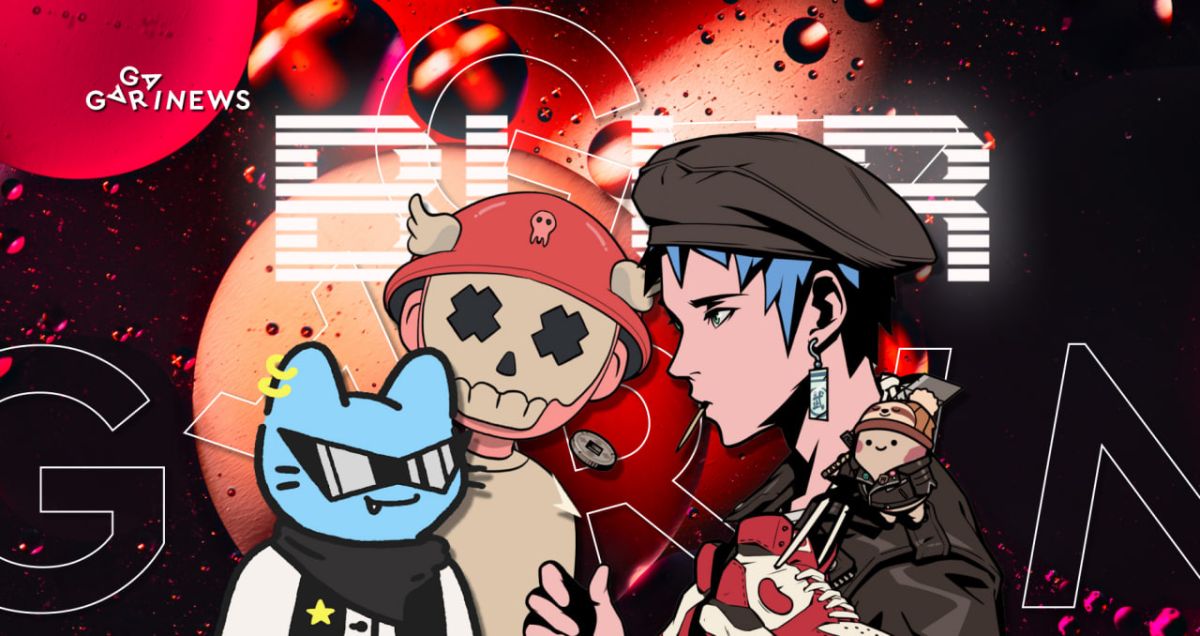Blur NFT marketplace review

An anonymous developer, known by the nickname PacmanBlur, created an NFT trading platform. In a matter of months, it had overwhelmed trading giants including OpenSea, Rarible and SuperRare. How could he accomplish it, and what’s the key to Blur’s success?
On this page
Launched in October 2022 on the Ethereum blockchain, Blur stands for the NFT marketplace and aggregator.
The project was designed as a platform for professional traders seeking a smooth way to exchange non-fungible tokens. Its developer addressed the market's main request: making a profit with NFT. He seems to have believed that creating and collecting unique digital art is a narrow segment for a jet set. Yet, the vast majority of users view jpegs to be a highly liquid asset that have caught a favorable trend.
How it works
The Blur NFT marketplace is straightforward to use, even for newbies. All you need to do is visit the project's website, connect your MetaMask or WalletConnect wallet, and upload your NFTs to the platform.
The platform offers customers exceptional perks:
- advanced analytics;
- the ability to compare NFTs across multiple marketplaces;
- fast processing times;
- price and rarity filters;
- the ability to analyze your collection based on market demand;
- skipping over NFTs marked as suspicious or stolen;
- user-friendly interface.
Benefits of the platform for creators and sellers:
- It allows developers to set a royalty whenever their work is listed on the marketplace.
- It encourages customers to pay royalties by rewarding them with loyalty points and incentives in the form of BLUR tokens.
However, Blur's main feature is zero trading fees for NFT sales.
Additionally, the platform stands out with its stylish design, setting it apart from similar marketplaces.
The design was a labor of love. Source: blur.io
What is the BLUR token?
BLUR is the platform’s governance token, launched on 14 February 2022.
It was distributed among potential users through three airdrops:
- The first giveaway of BLUR was held among community members involved in beta testing six months before the official launch of the token.
- The second airdrop was intended for participants who actively traded in the first month after the launch of the project.
- A third tranche of tokens was allocated to traders who placed bids on Blur before its official launch.
Users could also exchange their Care Packages for BLUR tokens on the launch date.
In total, Blur initially released 360 million BLUR tokens, which at the time of writing are worth slightly less than $360 million (the token currently trades at $0.992). The current market interest is high, with daily trading volumes exceeding $283 million.
The total supply of BLUR tokens is currently 390,368,806 BLUR (since the platform still issues tokens in small quantities). They are available on Coinbase, KuCoin, Uniswap, OKX, Bybit and Kraken.
Why did Blur beat OpenSea?
Firstly, Blur takes no commission, while OpenSea charges sellers 2.5% of each transaction.
Secondly, Blur serves both as a trading platform and NFT aggregator, offering more trading features than OpenSea. Traders have access to analytics on NFT rarity and the token's full sales history.
Thirdly, Blur has a Seaport function that lets users bypass OpenSea's blacklist.
Fourthly, OpenSea requires traders to switch between tabs to view all their account details, whereas Blur displays analytics, sales history and other personal data on a single page, saving users' time. Moreover, data updates are made every four seconds.
Above all, the platform distributed BLUR to its traders, while OpenSea hasn't issued its own token. As a result, Blur reported trading volumes quadruple those of OpenSea in February 2023.
To win back customers who switched to Blur, OpenSea decided to waive commissions for several months and set a mandatory 0.5% royalty for authors (although sellers can manually choose a higher percentage).
However, OpenSea also blocked trading platforms that didn't apply author royalty settings, including Blur. This meant that creators couldn't receive royalties from both platforms at the same time.
But in January, Blur managed to bypass OpenSea's blocklist control using the Seaport protocol. PacmanBlur advised NFT creators to block secondary trades on OpenSea, saying that it would only enforce full royalty settings for projects that failed to pass OpenSea moderation.
As a result, users flocked in droves to the platform, which brought in extra revenue, even if not entirely by legitimate means.
What are the prospects for the Blur project?
These days it's difficult to predict who would win in the showdown between a young, energetic lightweight and a heavyweight boxer. So far, Blur has some tempting opportunities to knock out a goliath who thought its market position was unshakable and didn’t bother to keep users engaged with new features and higher revenues.
Besides, Blur has raised over $14 million from some top NFT experts, including Paradigm, Cozomo Medici, dhof, Bharat Krymo, Zeneca, OSF, MoonOverlord, icebergy, Deeze, Andy8052, Keyboard Monkey. This shows a high level of trust from the community. These opinion leaders are now actively promoting Blur on their accounts, just as they used to praise the OpenSea platform. And with millions of followers listening to their words, we see no obstacles to Blur's continued growth and popularity as an NFT marketplace in the near future.
The content on The Coinomist is for informational purposes only and should not be interpreted as financial advice. While we strive to provide accurate and up-to-date information, we do not guarantee the accuracy, completeness, or reliability of any content. Neither we accept liability for any errors or omissions in the information provided or for any financial losses incurred as a result of relying on this information. Actions based on this content are at your own risk. Always do your own research and consult a professional. See our Terms, Privacy Policy, and Disclaimers for more details.


























